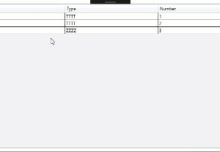Contents:


Now let’s see how to manually calculate support and resistance levels from the pivot point. Traders employ pivot points and the support and resistance levels they establish to identify possible entry and exit points, both for stop-losses and profit-taking. The floor pivot points are the most basic and popular type of pivots. The pivot point is interpreted as the primary support/resistance level – the point at which the main trend is determined.
Pivot Points: Are They a Worthy Addition to Your Toolbox? – Action Forex
Pivot Points: Are They a Worthy Addition to Your Toolbox?.
Posted: Mon, 06 Aug 2018 07:00:00 GMT [source]
Keep in mind that this Pivot Point is based on the prior period’s data. It is put forth in the current period as the first important level. A move above the Pivot Point suggests strength with a target to the first resistance. A break above first resistance shows even more strength with a target to the second resistance level. The difference with the other methods is that the DeMark’s formula relies on the more recent data, rather than the closing prices of the previous trading day.
The usage of Pivot Points
Prior to making any decisions, carefully assess your financial situation and determine whether you can afford the potential risk of losing your money. A forex pivot point is a level based on the previous day’s price action that indicates where a market is likely to turn. Day traders calculate pivot points to determine levels of entry, stops, and profit-taking. Futures and forex trading contains substantial risk and is not for every investor. An investor could potentially lose all or more than the initial investment. Risk capital is money that can be lost without jeopardizing ones’ financial security or life style.
Gauging the Strength of a Market Move with the ACD System – Investopedia
Gauging the Strength of a Market Move with the ACD System.
Posted: Sat, 25 Mar 2017 09:51:13 GMT [source]
The R1 and S1 are levels, most of the times, used as first targets in case the price bounces off the PP, and as continuation levels when they get exceeded by the price in trend. In the latter case the entry is waiting for the price to return to the pivot point, or the average, or right on top of it. On the Camarilla pivot points trading strategy, the Resistance 3 and Support 3 levels are often used as levels to open a trade against the trend. The Camarilla pivot points were first used, and developed, by trader Nick Scott, who had already made Fibonacci pivot points his mantra for calculating intraday supports and resistances.
Why Day Traders use Pivot Points
When price rallies back above the reference point , initiate a long position with a stop at the recent swing low. Identify bullish divergence at the pivot point, either S1, S2 or S3 . Identify bearish divergence at the pivot point, either R1, R2 or R3 . If you are new to our screener and want to learn how to use pivot points calculators, then we are with you to explain.
To fully harness this technical indicator in your trading strategy, it’s essential to understand where it triumphs and where it can fall short. Determine significant daily, weekly, and monthly support and resistance levels with the help of pivot points. To learn more about how they work, check out our Pivot Points lesson. A moving average is a technical analysis indicator that helps level price action by filtering out the noise from random price fluctuations. As a result, this system works in ways that are similar to strategies that involve the use of Exponential Moving Averages because price data that is recent will be weighted most heavily . It’s also important to note that in some asset markets (i.e. foreign exchange markets), opening prices and closing prices for a certain asset might actually be the same value.
The pattern is considered a continuation pattern, with the breakout from the pattern typically occurring in the direction of the overall trend. For traders who are bearish and shorting the market, the approach to setting pivot points is different than for the bullish, long trader. To get a full understanding of how well pivot points can work, compile statistics for the EUR/USD on how distant each high and low has been from each calculated resistance and support level . The middle Pivot Point is shown as a solid line between the support and resistance pivots. Keep in mind that the high, low and close are all from the prior period.
Pivot points example calculation
When the price reaches the support level, it could be a signal to enter long trades. Otherwise, when the price goes up to the resistance level, traders are likely to open short positions. It’s important to keep in mind that pivot point calculation is based on the high, low, and close price of the previous trading period, usually day. Thus, when the trading day finishes, it’s necessary to find the high, low, and close price values of this day and then sum these values and find the average by dividing this number by three.
Resistance level is the price at which stock is likely to stop rising further and face resistance. In other words, at the resistance level, there will be more sellers than buyers. Strategically, a stop-loss order should be placed just on the other side of the pivot line to maximize profits. For instance, the sell-stop would be placed slightly under the pivot line on long positions.
- S1 – Support 1is the first support level positioned below the pivot.
- The calculations of Fibonacci pivot points are similar but still slightly different from the Standard pivot points.
- Traders use these pivot points to know the possible entry, Exit, and stop-loss prices for trades.
- Let’s now look at how to calculate each of these methods manually.
- Pivot point indicators give traders a means of determining the direction of the price and then place support and resistance levels.
- Similarly, if the price moves through these levels it lets the trader know the price is trending in that direction.
Trading financial products carries a high risk to your capital, particularly when engaging in leveraged transactions such as CFDs. It is important to note that between 74-89% of retail investors lose money when trading CFDs. These products may not be suitable for everyone, and it is crucial that you fully comprehend the risks involved.
Calculating Pivots
Based on my experiences in the market, resistance levels also act as psychological barriers. When the market approaches a resistance level, many traders will enter short positions , anticipating a price decrease. The pivot point is recognized as the most reliable indicator in the market. It is used by many intraday traders to find the trade entry and exit points.

Therefore, to increase the efficiency of this tool it’s recommended to use it in conjunction with other indicators, for example, Moving Average , Fibonacci Retracement, and others. The Mcginley Dynamic indicator is an indicator that is based on moving average line indicator with a soothing… The Moving Average Convergence Divergence is both a momentum and trend following indicator.It is calculated by…
In addition, hypothetical trading does not involve financial risk, and no hypothetical trading record can completely account for the impact of financial risk of actual trading. The 21st century is all about living globally, traveling, and being able to work remotely from anywhere in the world. Conservative traders will wait for a reversal pattern to enter their trades.
Similarly, if the https://traderoom.info/ moves through these levels it lets the trader know the price is trending in that direction. They are technical indicators that show an average of the high, low, and ending prices from the previous trading day. Support and resistance lines are a theoretical construct used to explain the seeming unwillingness of traders to push the price of an asset beyond certain points. If bull trading appears to rise to a consistent level prior to stopping and retracing/reversing, it is said to have met resistance. If bear trading appears to hit a floor at a certain price point before consistently trading up again, it is said to have met support.
There are various technical indicators that have made the analysis of the financial markets remarkably easy. Just as it is with all indicators, traders should only use it as part of a complete trading plan. The mid-point is indicated as a strong line between the support and resistance points. Remember that the high, low, and close all come from the previous period. If it is Tuesday morning, use the high, low, and close from Monday to make the levels of the pivot point for the Tuesday trading day.
The pivot point is then used to identify two support and two resistance levels for the day. The support and resistance levels are determined based on the difference between the previous day’s high and low prices and the pivot point. In this guide to pivot point calculations, we will discuss the various calculations involved when pivot point trading strategies are used in the financial markets. This information will allow traders to see how each pivot point price level trading analysis is conducted on modern charting stations.

Like modern-era day traders, floor traders dealt in a very fast moving environment with a short-term focus. At the beginning of the trading day, floor traders would look at the previous day’s high, low and close to calculate a Pivot Point for the current trading day. With this Pivot Point as the base, further calculations were used to set support 1, support 2, resistance 1, and resistance 2. These levels would then be used to assist their trading throughout the day. Pivot points offer traders a methodology to determine price direction and set support and resistance levels.

The how to calculate pivot points point is a technical indicator that helps investors determine the direction of the market trend. Moreover, being an average of the High, Low, and Close price of the previous trading session it is also used to foresee when the asset price might experience support and resistance levels. Although pivot points are valid over any time frame, they have become particularly popular in day trading. Apart from forex, the pivot points can be used with other financial assets, including commodities and indices. Pivot points can be implemented like regular support and resistance levels.
Let’s now look at how to calculate each of these methods manually. Typically, the more confirming factors are present, the more robust and reliable a trade signal is likely to be. Pivot points and Fibonacci retracements or extensions both draw horizontal lines to mark potential support and resistance areas.


